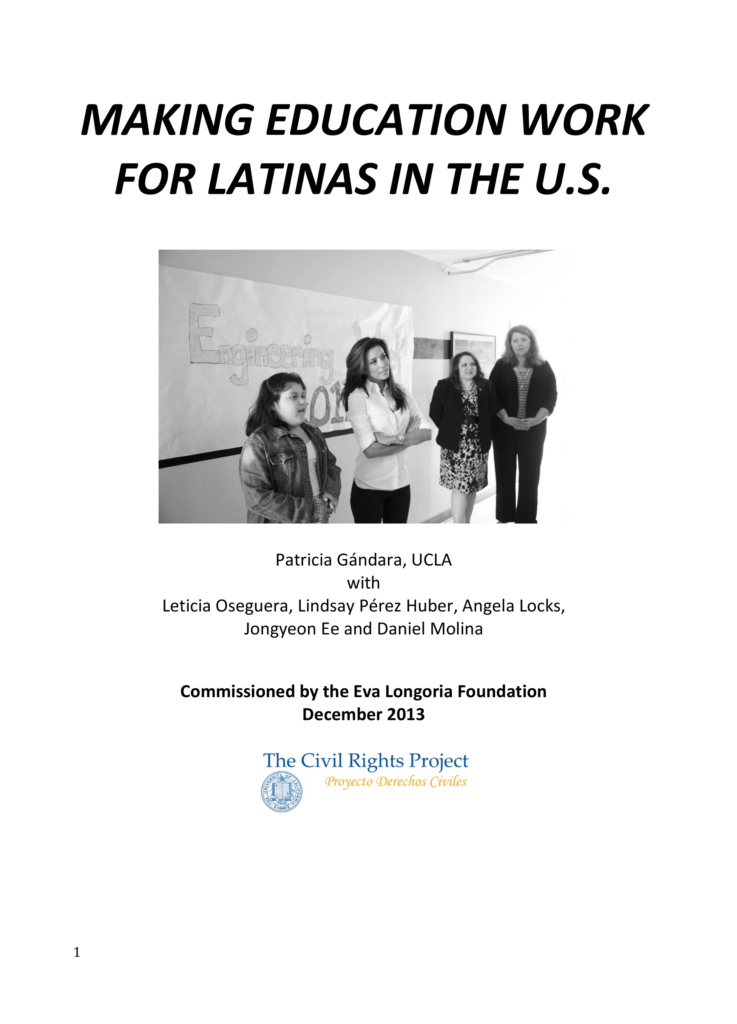In California, almost 40% of European American adults hold a BA degree, as do 23% of African Americans and 48% of Asians. However, only 11% of adult Latinas/os hold a BA degree or higher. Given that the majority of the school age population in the state is now Latina/o, this undereducation is not just an urgent problem, but foreshadows economic disaster for California.
Although Latinas complete college at almost twice the rate as their male counterparts, they trail all other women by significant percentages. The fact that two-thirds of Latinas come from low- income families and that many people continue to hold negative stereotypes about Latinas result in unique challenges for these young women: they are often expected to prioritize family responsibilities above school, they often feel that they “don’t belong” in school, a feeling that can be reinforced by discrimination and low expectations, and they see few models of Latinas who have excelled educationally that they can emulate. Too many lack any understanding of how or even why to pursue a college education.
The study found a number of important “levers” for improving educational outcomes:
- Having more Latina/o teachers leads to significantly higher rates of college going for Latinas.
- Maintaining bilingual skills is associated with a higher rate of college going.
- Feeling confident about math and doing well in it leads to higher rates of high school completion and college going.
- Being involved in extracurricular activities in school is associated with successful high school graduation and college going, and in turn appears to be related to developing a sense of belonging in school.
- Having a strong personal belief about completing high school and going to college predicts actually doing so.
- Peers with knowledge and aspirations to go to college is associated with college-going
Each of these findings suggests many potential actionable policies, for example:
- Recruit and support the development of more Latina/o teachers and counselors.
- Support the development of bilingualism and biliteracy.
- Emphasize math development and support for Latinas.
- Attach every Latina student to an extracurricular activity that can bind her to school, e.g., music, art, sports, service clubs, student government.
- Help parents support their daughters’ belief that they will complete high school and go onto college through programs that target Latinas and their families.
- Provide opportunities for Latinas to have greater contact with mainstream peers through magnet schools and programs.
Educational Video
“Pursuing a Dream: Making Education Work for Latinas“
UCLA GSEIS Distinguished Speaker Series, 12/2/2013
Actress Eva Longoria, UC President Janet Napolitano, California Community Foundation President/CEO Antonia Hernández, and UCLA Research Professor Patricia Gándara discuss the report and its findings in a conversation moderated by GSEIS Dean Marcelo Suárez-Orozco.
In compliance with the UC Open Access Policy, this report has been made available on eScholarship:
